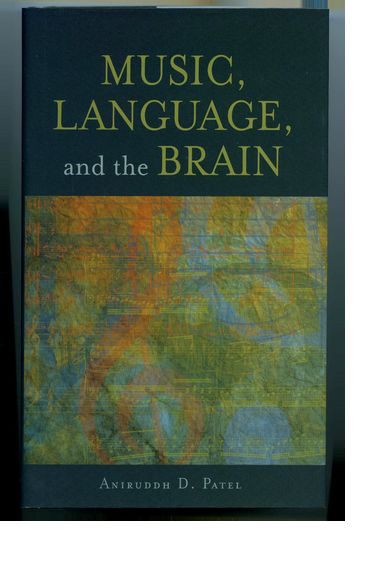In the first comprehensive study of the relationship between music and language from the standpoint of cognitive neuroscience, Aniruddh D. Patel challenges the widespread belief that music and language are processed independently. Since Plato's time, the relationship between music and language has attracted interest and debate from a wide range of thinkers. Recently, scientific research on this topic has been growing rapidly, as scholars from diverse disciplines, including linguistics, cognitive science, music cognition, and neuroscience are drawn to the music-language interface as one way to explore the extent to which different mental abilities are
processed by separate brain mechanisms. Accordingly, the relevant data and theories have been spread across a range of disciplines. This volume provides the first synthesis, arguing that music and language share deep and critical connections, and that comparative research provides a powerful way to study the cognitive and neural mechanisms underlying these uniquely human abilities.
Winner of the 2008 ASCAP Deems Taylor Award.
Features
- Selling point: The first scientific book about music-language relations from the standpoint of cognitive neuroscience
- Selling point: Argues that music and language share deep and critical connections, challenging the traditional belief that music and language are processed independently
- Selling point: Synthesizes research in linguistics, cognitive science, music cognition, and neuroscience
- Selling point: Companion website provides sound and music examples referenced in text
1Introduction
2Sound Elements: Pitch and Timbre
2.1 Introduction
2.2 Musical Sound Systems
2.3 Linguistic Sound Systems
2.4 Sound Category Learning as a Key Link
2.5 Conclusion
Appendices
3Rhythm
3.1 Introduction
3.2 Rhythm in Music
3.3 Rhythm in Speech
3.4 Interlude: Rhythm in Poetry and Song
3.5 Non-Periodic Aspects of Rhythm as a Key Link
3.6 Conclusion
Appendices
4Melody
4.1 Introduction
4.2 Melody in Music: Comparisons to Speech
4.3 Speech Melody: Links to Music
4.4 Interlude: Musical and Linguistic Melody in Song
4.5 Melodic Statistics and Melodic Contour as Key Links
4.6 Conclusion
Appendices
5Syntax
5.1 Introduction
5.2 The Structural Richness of Musical Syntax
5.3 Formal Differences and Similarities between Musical and Linguistic Syntax
5.4 Neural Resources for Syntactic Integration as a Key Link
5.5 Conclusion
6Meaning
6.1 Introduction
6.2 A Brief Taxonomy of Musical Meaning
6.3 Linguistic Meaning in Relation to Music
6.4 Interlude: Linguistic and Musical Meaning in Song
6.5 The Expression and Appraisal of Emotion as a Key Link
6.6 Conclusion
7Evolution
7.1 Introduction
7.2 Language and Natural Selection
7.3 Music and Natural Selection
7.4 Music and Evolution: Neither Adaptation nor Frill
7.5 Beat-Based Rhythm Processing as a Key Research Area
7.6 Conclusion
<i>Appendices</i>
<i>Afterword</i>
<i>References</i>
Primary: Researchers in music cognition, linguistics,
psycholinguistics, cognitive science, neuroscience, music
theory, and communication sciences
Secondary: Upper level undergraduates and general readers
who have sufficient background in linguistics or music science


